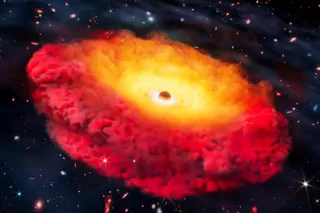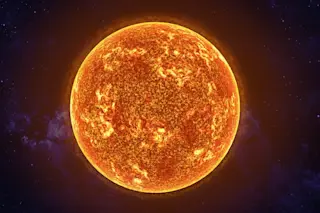The light in this image emanates from a supermassive black hole at the center of a galaxy 13 billion light-years away.(Credit: Momjian, et al.; B. Saxton (NRAO/AUI/NSF)) The early universe is a mystery. It's quite literally surrounded by a veil that obscures its distant, early light. But a new glimmer through that void could give us a glimpse into this mysterious era. Two papers released in the Astrophysical Journal (first paper, second paper) detail the discovery of a quasar dubbed PSO J352.4034-15.3373, or P352-15 for short. Quasars are the active centers of large galaxies where supermassive black holes shoot out jets of gas. The image is faint, but shows three distinct regions spreading across some 5,000 light years. Our universe is 13.8 billion years old; this quasar is 13 billion years old. In the intervening time, our universe was filled with neutral hydrogen - one positively charged proton mated to ...
Astronomers Discover the Brightest Early Galaxy Ever
Explore the discovery of quasar PSO J352.4034-15.3373 and its link to a supermassive black hole in the early universe mystery.
More on Discover
Stay Curious
SubscribeTo The Magazine
Save up to 40% off the cover price when you subscribe to Discover magazine.
Subscribe













